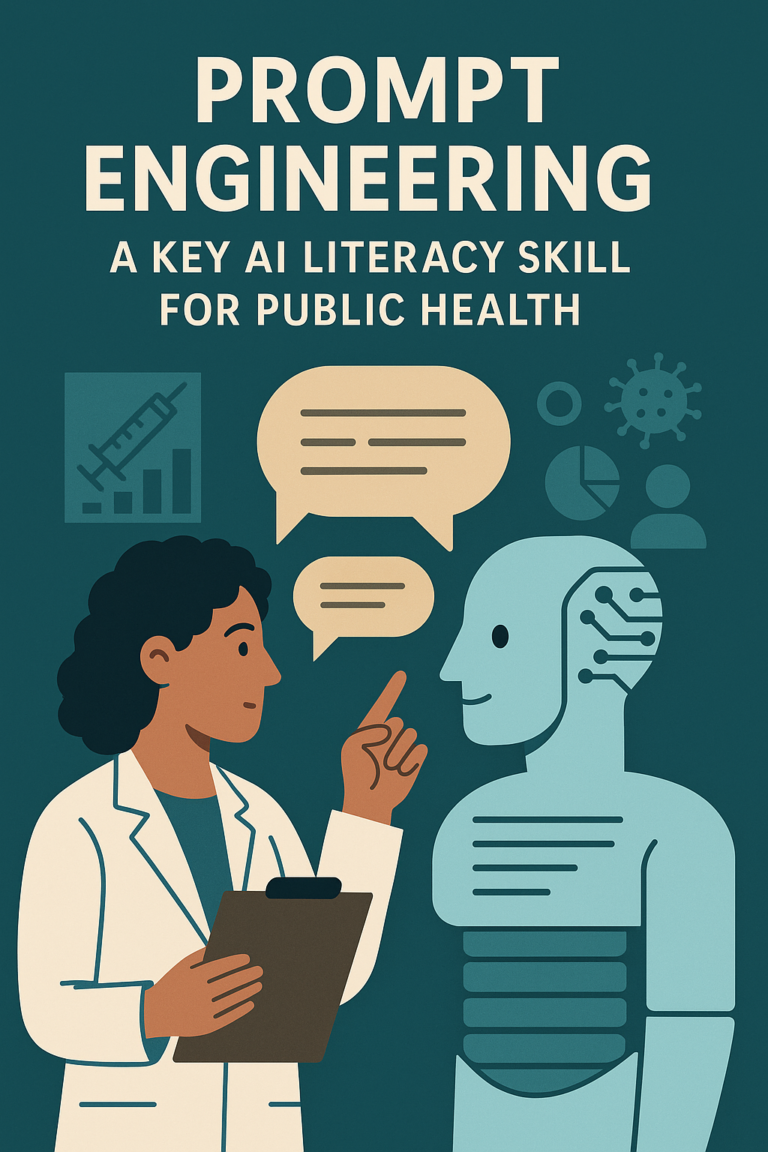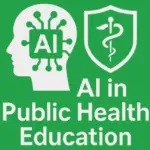
Introduction
As artificial intelligence becomes more integrated into public health practice, understanding how to effectively interact with AI systems is no longer optional—it’s essential. One of the most practical and accessible skills in this space is prompt engineering, the art and science of crafting inputs that produce accurate, relevant, and actionable outputs from AI models like large language models (LLMs).
What Is Prompt Engineering?
At its core, prompt engineering involves designing queries or instructions—known as prompts—to elicit desired responses from AI tools. Whether summarizing research articles, generating data-driven insights, or simulating health scenarios, the quality of a prompt directly influences the usefulness of the AI’s output.
For example, asking a generic prompt like “Tell me about vaccines” might generate a broad overview. But refining it to “Summarize recent findings on vaccine hesitancy among adults in the U.S. based on CDC data” will yield a more targeted and informative result.
This seemingly simple skill has profound implications for professionals working in data-heavy and decision-sensitive fields like public health.
Why Prompt Engineering Matters in Public Health
Public health increasingly relies on AI-driven tools for epidemiology, health communications, and policy planning. However, without AI literacy, particularly skills like prompt engineering—professionals risk misinterpreting or misusing these powerful tools.
Here’s why prompt engineering should be part of public health education:
-
- Improves data retrieval and interpretation: Public health researchers and students can use prompt engineering to extract structured summaries from unstructured datasets, accelerating literature reviews and environmental scans.
-
- Enhances communication strategies: Health departments can craft precise prompts to generate culturally sensitive and linguistically appropriate messaging using AI, which is crucial for outreach during health crises.
-
- Supports decision-making: Accurate prompts help generate evidence-based recommendations for policy discussions, reducing noise and emphasizing clarity.
Real-World Examples
Prompt engineering already plays a role in various public health settings:
-
- Epidemiology: AI tools like ChatGPT or GPT-4 can help analysts quickly identify trends in disease surveillance reports when prompted with, for example, “Highlight key changes in weekly influenza case counts in the Midwest from October to December 2024.”
-
- Grant Writing and Program Development: Health professionals use AI to draft sections of grant proposals. A well-structured prompt such as “Generate a needs assessment for a diabetes prevention program targeting rural communities in Georgia, citing recent data” can save hours of manual drafting.
-
- Training Simulations: In educational settings, instructors can use prompt engineering to generate case studies or scenario-based learning modules tailored to specific health conditions or populations.
Barriers and Opportunities
Despite its importance, prompt engineering is not widely taught in public health schools. This gap leaves many professionals underprepared to harness the full potential of AI tools.
However, some institutions are beginning to take the lead. The University of Michigan’s School of Public Health has introduced digital health courses. There’s a critical opportunity for schools and organizations to formalize AI literacy training—including prompt engineering, as a core competency in public health curricula and professional development.
Call to Action: Elevate AI Literacy Through Prompt Engineering
As AI becomes embedded in the infrastructure of public health, from predictive analytics to community outreach, the ability to interact with these tools intelligently will distinguish forward-thinking professionals and institutions.
Incorporating prompt engineering into public health education and workforce training is a practical and powerful way to foster AI literacy. It’s not just about learning how AI works—it’s about learning how to work with AI effectively.
Public health schools, educators, and policymakers: now is the time to integrate AI literacy—including prompt engineering, into your programs. The future of public health depends on it.
